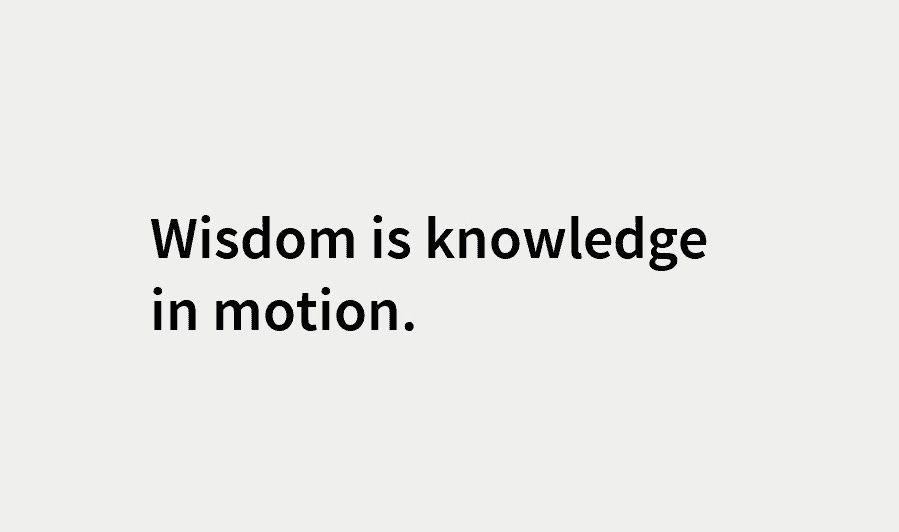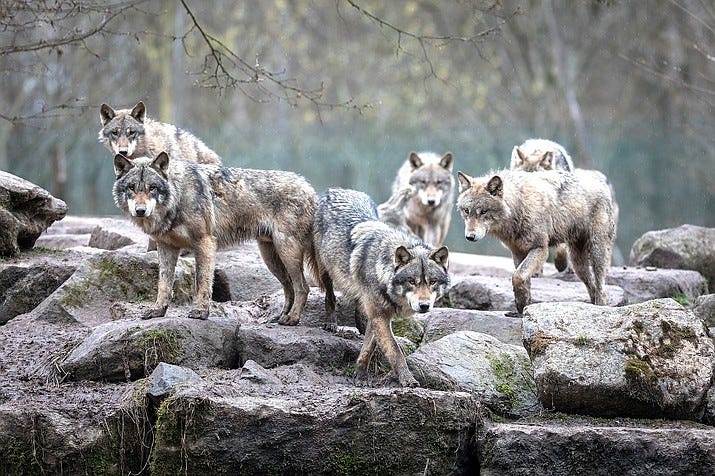“It’s not the “how interesting!” reaction when we first read what matters; it’s the “Aha moment!” when we re-read what transforms.”
The goal with the monthly summary is to provide you with some quotes from the posts linked to practical prompts and questions to use in 1:1 meetings, feedback / coaching sessions, or to inspire themes for larger team meetings.
The wolves within
“For the strength of the Pack is the Wolf, and the strength of the Wolf is the Pack.” Rudyard Kipling, “The Jungle Book” In Cherokee language “WAYA” means wolf, and the wolf is one of the most respected creatures in Native American culture.Thanks for reading Leadership Reflections! Subscribe for free to receive new posts and support my work.
“For the strength of the Pack is the Wolf, and the strength of the Wolf is the Pack.” Rudyard Kipling, “The Jungle Book”
THE TWO WOLVES STORY - it offers profound insights into the multifaceted nature of character development and leadership choices.
Leadership demand us to become astute judges of character, both within ourselves and others.
Leading with a deep understanding of the nature of human complexity allows us to foster inclusive and supportive environments.
The wolf can only realize its full potential as part of a pack.
Questions and prompts to use with your team:
In fostering a culture of diversity and following the learnings from the “Two Wolves” complete story, how can you avoid the temptations of binary thinking and ensure that every 'wolf' in your team feels seen, heard, and understood, so they can contribute their unique tenacity, courage, compassion, and other qualities to create a strong, united pack?
Reflecting on the Cherokee elder's wisdom, how can you help individuals within your organization embrace their 'black wolf' qualities, such as fearlessness and strength of will, without suppressing their 'white wolf' traits like empathy and kindness, so both aspects can harmoniously coexist?
How can you actively feed both wolves within you, acknowledging that embracing the full spectrum of emotions and traits can lead to greater self-awareness?
Can you reflect on the pack structure and apply the insights and learnings to a team building activity? How does relate to the unique challenges you face with your team
The Art of Sustained Performance
“Exceptional success requires exceptional circumstances” Wayne Smith - What is performance? - What determines performance? - What is high performance? - What is sustained performance? - What’s the X factor you bring to the table able that makes a difference?
“Exceptional success requires exceptional circumstances” Wayne Smith
How does one accomplish the impossible?
Step one: Define the impossible.
Step two: Employ first principles thinking.
Step three: Elevate the possible.
“If you take care of the character and the culture, the score will take care of itself” Bill Walsh
Performance = capabilities x culture x behaviors
Maori saying "A little water seeping through a small hole may swamp a canoe."
The art of leadership lies not solely in conquering the impossible "WHAT," but equally in mastering the transformative "HOW."
Questions and prompts to use with your team:
How can we define and embrace the 'impossible' challenges within our organization, and inspire our teams to envision new heights?
In what ways can we adopt the 'first principles thinking' approach to break down seemingly unattainable goals into smaller, achievable parts, thus encouraging our teams to focus on the 'possibles' and unleash their innovative potential?
How do we cultivate a culture that values integrity, character, and a shared vision, to help amplify the impact of each team member?
are we doing everything in our power to create such environment?
How can we effectively identify and eradicate toxic behaviors within our teams, ensuring that the 'HOW' acts as a multiplier force for sustained high performance?
Climbing the corporate ladder is a bad career growth metaphor
“Rome wasn’t build in one day, but they were laying bricks every hour” John Haywood (American historian) In the pursuit of career growth, the metaphor of climbing the corporate ladder has long been ingrained in our minds. However, as we delve deeper into the essence of career development, it becomes evident that there's a better analogy -
“Rome wasn’t build in one day, but they were laying bricks every hour” John Haywood (American historian)
to think of my career as a collection of experiences, as a mosaic of “moments of impact”, rather than a ladder to be climbed.
“This advice helped me think less of rungs and ladders, and be more intentional about finding bricks of different shapes and sizes to build with.”
The wall is team centered, the ladder is self centered.
The bricklayer is a legacy builder.
“Never be too big to do the small things that need to get done”
Be a proud bricklayer, humble, focused, full of resources and grit.
Questions and prompts to use with your team:
How can you develop the mindset of becoming a proud bricklayer? What are the tangible things you build leaving a lasting impact on the organization?
How can you prioritize diverse experiences and lateral moves to create a strong foundation for long-term growth? Do you seek opportunities and perspectives that contribute to your skills and knowledge base? What is missing from your perspective?
What steps can you take to foster cultures of collaboration and co-creation within your team and organization? Emphasize the value of collective intelligence and problem-solving, and encourage a team-centered mindset over self-centered ladder climbing.
How can you nurture humility, persistence, and patience in your leadership approach? Embody the qualities of a bricklayer by taking on every opportunity with curiosity and determination, ensuring tangible progress rather than a rush to the next rung.
OSTINATO RIGORE
Leonardo Da Vinci was born in 1452 in Italy, near Vinci outside of Florence. He was the illegitimate son of a young peasant woman, Caterina, but went to live with his father Piero soon after brith. Leonardo obtained very little formal education, however three rich experiences shaped his learning journey:
“Ostinato rigore:” stubborn rigor, rigorous persistence or tenacious application.
It’s worth reflecting on the value of these three teachers in life: reading, observing, doing (under a master)
The access to books and the opportunity to read open up a world of possibilities, present you with infinite reflections helping you formulate more and better questions as opposite of thinking your job is to have answers.
Apprenticeship helps connect the dots between reading, observing and researching; to enable doing, the only way to see real growth.
For Leonardo Da Vinci the standard was simple, if he encountered a problem, he would not let go. The experience and the practice amplified his intelligence.
Questions and prompts to use with your team:
How can you apply "Ostinato Rigore" to your current challenges and pursuits to persistently seek solutions and push beyond perceived limitations?
In what areas of your life or work do you find yourself giving up too easily? How might embracing "Ostinato Rigore" help you overcome these obstacles?
What specific steps can you take to enhance your discipline in asking "why" and "how" to deepen your understanding and problem-solving skills?
How can you incorporate periodic self-assessment and root cause analysis into your routines to identify areas of improvement and growth opportunities?
When faced with setbacks or difficulties, how can you leverage the concept of "Ostinato Rigore" to maintain focus, resilience, and a determined mindset to keep moving forward?









